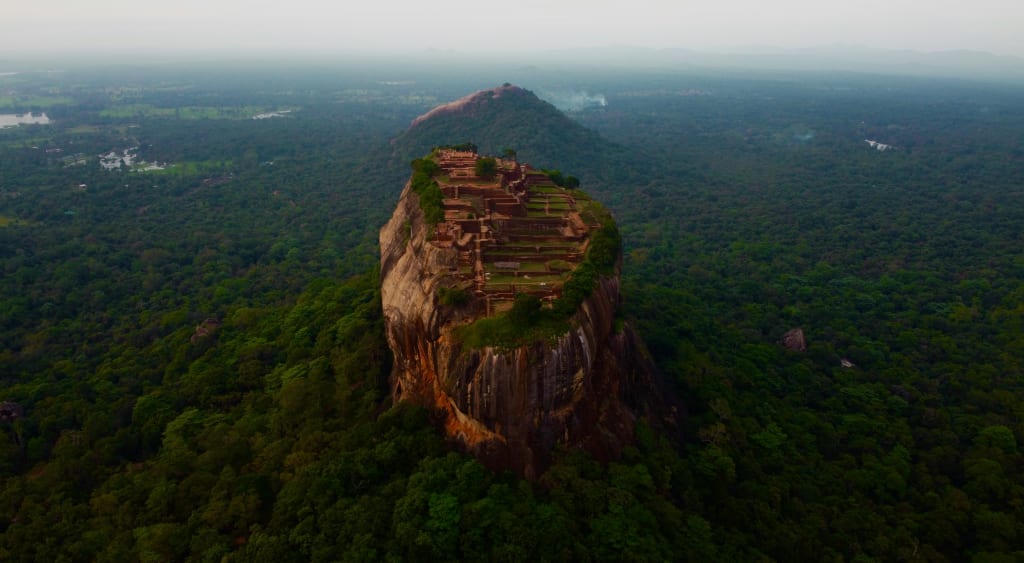Why Visitors Flock to Sigiriya
Exploring the Allure of Adventure, History, and Natural Beauty

Some consider Sigiriya the eighth wonder of the world and a magnificent remnant of ancient Sinhalese culture. This massive rock and its surroundings are a wonderful sight for those who love exploring ancient cities and cultures. Keep reading to discover more about Sigiriya and what the beautiful site entails.
History of Sigiriya
Sigiriya has a colourful past and is one of the most visited sites in Sri Lanka. The site dates back to prehistoric times and was once a monastery for meditating Buddhist monks. Its recorded history begins with the murder of the righteous king Dhatusena by his son Kashyapa. After having committed parricide he was shunned by many for his heinous crime. To make matters worse, his half-brother Mugalan the rightful heir to the throne was out to get his blood. This prompted Kashyapa to abandon the Kingdom of Anuradhapura and seek a hideout which eventually became Sigiriya. He shifted the capital to Sigiriya and built a magnificent fortress with massive water gardens, fortifications and a spectacular palace atop the gigantic rock. However, popular legend has it that the actual palace was inside the hollowed-out rock!
Water Gardens
You will encounter water gardens and fountains within the palace premises. Archaeological evidence suggests that the summit may have had gardens as well. At the ground level towards the western entrance, you will find ponds symmetrically arranged and embellished with several fountains and a water channel. To this day, it remains a mystery how the ancient engineers managed to transport water up onto this massive rock and how well the gardens were maintained at summit level. You can find many luxury hotels in Sigiriya, the likes of Water Garden Sigiriya are among the top choices available.
Rock gardens
The rock gardens at Sigiriya are quite different from the water gardens at ground level. The area is covered in thick forest and includes pathways winding between massive boulders and rocky arches. Most of the boulders have extended niches, which would have originally supported wooden pavilions that stood on nearly every boulder. It is believed that the monks of Sigiriya lived in this garden of boulders for hundreds of years before it became part of the palace. The remains of the community of monks can still be seen today among the numerous caverns and shelters.
Frescoes
Among the frescoes found in Sigiriya, the Sigiriya damsels are among the most iconic of them all. A spiral staircase will take you to a cave with many depictions of beautifully painted females. These frescoes depict curvaceous and bare-chested ladies offering fruits and flowers. Some believe the women to be deities, while other theories abound that they are part of King Kashyapa's harem. There are 21 frescoes remaining of the damsels, however, it is believed there used to be hundreds of them painted alongside the cavernous part of the Sigiriya Rock.
Wall of mirrors
The orange-hued wall was once so shiny that people's faces reflected on it as in a mirror, thus the name Wall of Mirrors came to be. The shine on the wall was achieved by a concoction made from beeswax, forest honey, egg whites and burnished lime. This mixture was plastered onto the wall to make it translucent, although over time the shine has lost its lustre. Many of the ancient visitors who came to visit Sigiriya and the damsels have written poetry inspired by the beauty and grandeur of the place on the wall. The graffiti remains one of the oldest in Sri Lanka and dates back to at least 700 CE.
Sigiriya summit
The summit of Sigiriya is the highlight of the whole experience. Atop you will be greeted with magnificent views of the entire area surrounded by lush green jungles. You can find a pool that never dries up, foundations of the structures and a stone throne among others. At the lower extremity of the summit you will encounter a series of terraces, these are believed to be the remnants of the water gardens of yore. While there you can certainly imagine a time when King Kashyapa must have kept a vigil half expecting to see the army of Mugalan surround the area.
About the Creator
Enjoyed the story? Support the Creator.
Subscribe for free to receive all their stories in your feed. You could also pledge your support or give them a one-off tip, letting them know you appreciate their work.






Comments
There are no comments for this story
Be the first to respond and start the conversation.